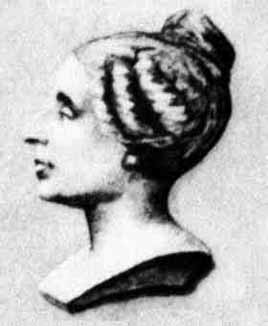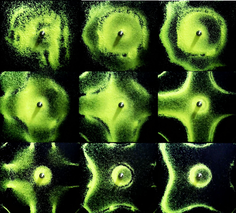My thesis title: Thermal metamaterials and heat spreaders
What does this mean?
Heat spreaders: Our funnel-shaped heat spreader designs act as point-to-plane heat source converters. The material properties of each spreader guide the flow of heat in a spatially uniform manner such that, when forced by a small thermal source at the base, a uniform temperature is achieved across the larger top surface. Anisotropy (directional dependence) and inhomogeneity (spatial dependence) are typically needed to achieve these desired effects. We design and employ thermal metamaterials together with other techniques to obtain the necessary anisotropic and inhomogeneous properties.
Metamaterials: Meta is a Greek word meaning beyond, and so the concept of metamaterials refers to materials that are beyond that of the natural world so to speak. The unique, engineered properties of metamaterials means that we can manipulate and control physical fields (such as electromagnetic, acoustic and elastic wave fields) in new and exciting ways - the results of which are unachievable with natural materials alone! In my PhD we focus on the manipulation of thermal fields with thermal metamaterials, the properties of which are determined through transformation theory.
Transformation theory: In the context of my research, transformation theory is based on the heat equation being form invariant after a spatial transformation. To apply the theory for a given problem we:
- Consider what is needed in terms of manipulation.
- Apply an appropriate transformation between a virtual and physical space.
- Measure how much this transformation stretches (or compresses) the virtual space using the Jacobian matrix. (See A-to-Z)
- Use the Jacobian matrix to determine the properties of the thermal metamaterial that achieves the desired manipulation.
These properties are often anisotropic and inhomogeneous. We approximate this behaviour with layered, composite materials whilst also considering interfacial effects.
\begin{equation}
\mathbf{k} = \dfrac{\mathbf{F}k'\mathbf{F}^T}{\det\mathbf{F}}\tag{1} ,
\end{equation}
where \(k’\) is the conductivity in the virtual domain. When the conductivity in the transformed, metamaterial regions satisfy (1), any object placed within the void is undetectable from the external field – making it invisible! The effects of a traditional ground cloak are simulated in image 2. In my PhD I use a modified version of this mapping to utilize it in a new, heat spreading context. A simulation of this application is provided in the image 3.
|
a) The temperature field for a given material and set of boundary conditions. Black lines represent isotherms.
b) Same material and boundary conditions, but with part of the domain removed. This triangular void causes disturbances, referred to as perturbations, to the temperature field. We can use these perturbations to detect the apple. c) Same material and boundary conditions, but with triangular void surrounded by an anisotropic ground cloak. The unique properties inside the ground cloak counteract the perturbations caused by the void. As a result, we can no longer detect the apple – making it invisible! |
|
a) The temperature field through a funnel-shaped design when a natural, isotropic material is used. White lines represent isotherms and show that a uniform temperature is not naturally achieved across the top surface when the funnel is forced by a heat source at its base.
b) The temperature field through a heat spreader designed using a modified ground cloak. The design has three components: an upper isotropic component that is unaffected by the mapping; and two lower metamaterial layers that counteract the perturbations caused by the funnel-shaped geometry. The unique properties in the metamaterial layers guide the flow of heat through the spreader in spatially uniform manner, leading to uniform temperature across the top surface, as desired. |
|
a) Illustration of the composite design consisting of alternating layers aligned with the principal axes of the system. The thickness and conductivity of each layer are determined through effective medium theory.
b) Simulation of this design using 5 bilayers. The temperature field here approximates that of the metamaterial simulation in image 3(b). This design better represents the true metamaterial as we increase the number of bilayers. A sufficiently large number of layers would eliminate temperature variation across the top surface completely. |
- Being a teaching assistant for undergraduate courses.
- Attending conferences to present work and network with other researchers in my field.
- Creating online material for outreach and widening participation – like writing blog posts and A-to-Z entries for this website!
- Helping at science festivals to promote the research focuses of the Mathematics of Waves and Materials group.


 RSS Feed
RSS Feed